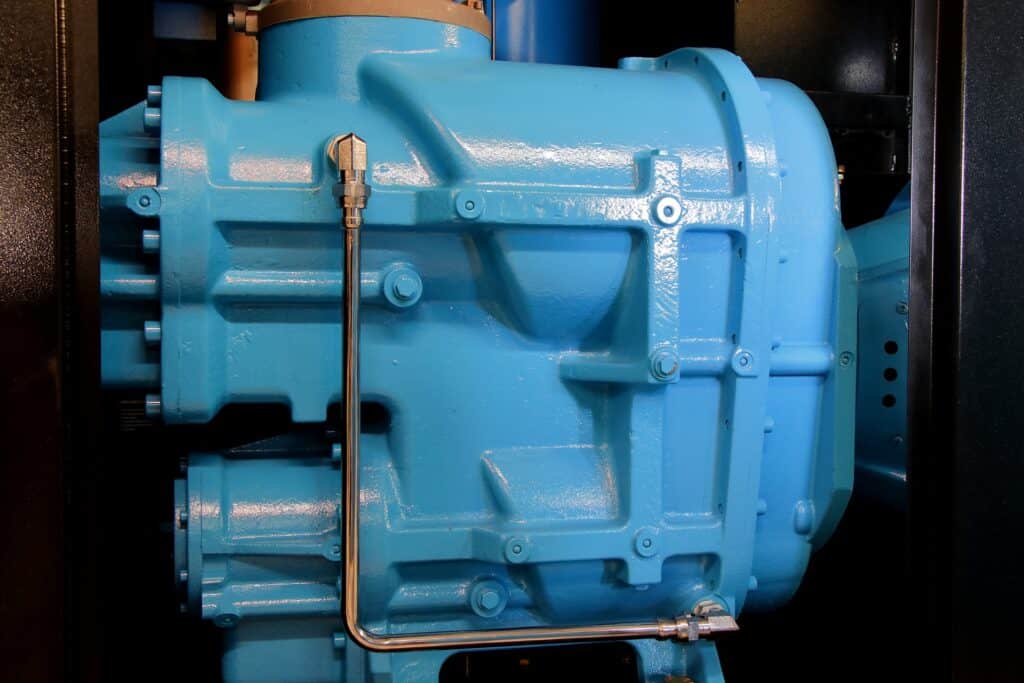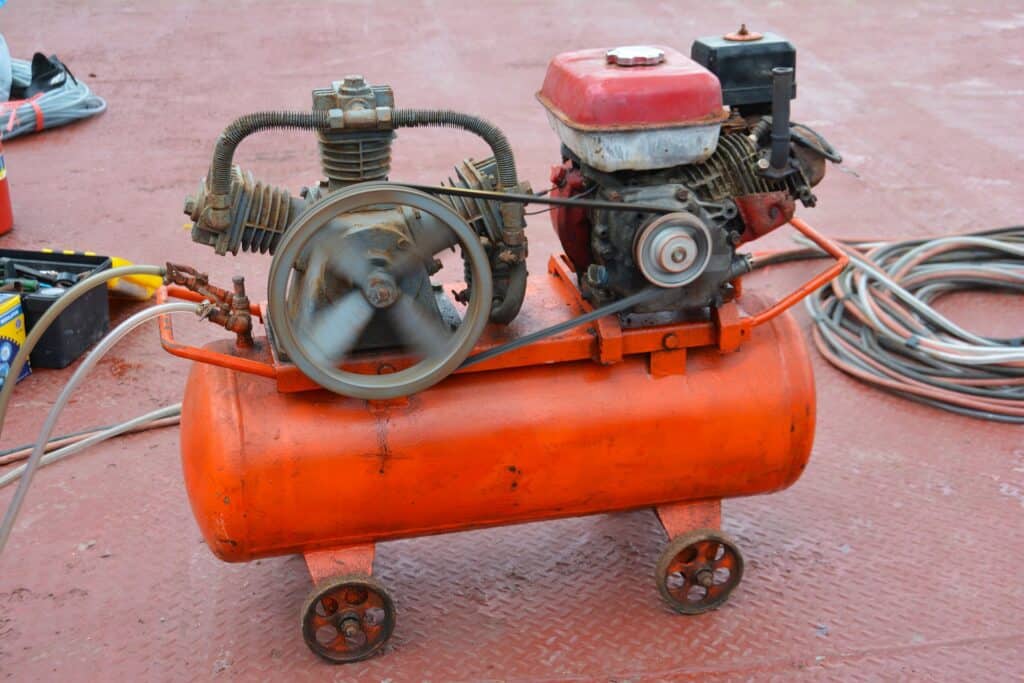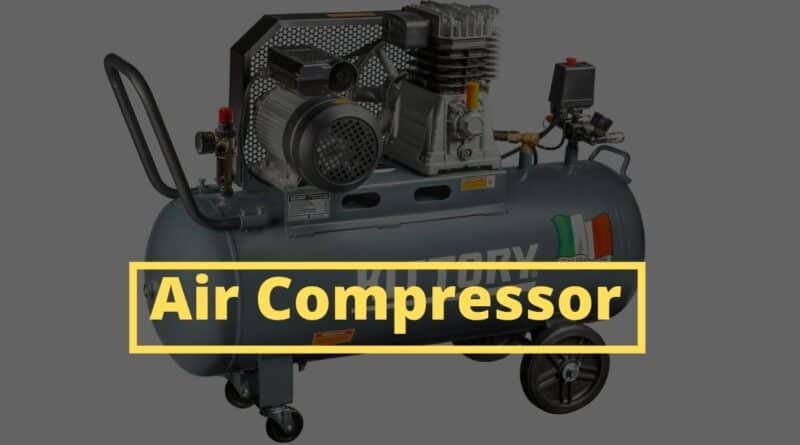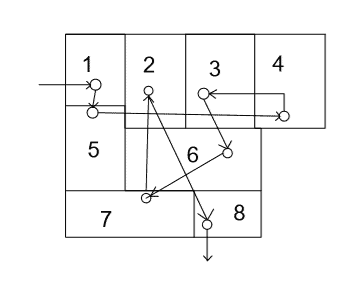What is Air Compressor? – easily explained| Air compressor types
Air compressor is a pneumatic device that converts mechanical energy into potential energy (Compressed air). Air compressors are used in industries as well as in domestic purpose where compressed air is required.
The pressure equals to force per unit area, so when the area is reduced pressure will be increased. An air compressor uses this principle to increase the pressure of the air. That means compressed air will have more pressure as well as more temperature.
What you are going to learn?
What is the function of air compressor?
By several process air compressor sucks in the successive volume of air from the atmosphere and squeezes (compress) each volume of air, and held in the tank until called into use. Air compressor is different than a pump, the pump works with liquid, here compressor works with the air. This compressed air can be used in varieties of application.
When compressed air pressure reached its lower level air compressor turns on and re-pressurized the tank, and turns off when tank pressure reached its higher level. There are many processes of air compression, all processes fall into either positive-displacement or roto-dynamics process.
Positive displacement compressor traps some amount of air then force it to reduce the volume of the air. When maximum pressure is reached, the output valve will open, and compressed air will discharge into the outlet system. The positive displacement air compressor can be Piston type, Rotary Screw type or Vane type.

Roto-dynamics compressor includes centrifugal and axial compressors. In these types of compressors, a rotating component imparts its kinetic energy to the air. This kinetic energy eventually converted into pressure energy.
What are the types of air compressor?
Air Compressors can be classified by their working nature, compression stages and pressure delivered.
According to the working nature air compressor can be classified into 4 types–
- Reciprocating Compressors.
- Rotary-screw Compressors.
- Rotary-vane Compressors.
- Centrifugal Compressors.
According to Compression stages–
- Single-stage Compressors.
- Multi-stage Compressors.
According to pressure delivery Air compressors can be classified into 3 stages–
- Low-pressure Compressors.
- Medium-pressure Compressors.
- High-pressure Compressors.
Reciprocating Compressor pumping air into the air chamber by the vacuum created by piston movement. During admission, a one-way valve guides air into the chamber and piston will act as the base. Down-stroke of the piston draws air into the chamber and up-stroke compress the air and force out into the tank.

The number of stages of the compressor is decided by the number of time air gets compressed between the inlet valve and the tool nozzel. compressor can be compressed the air by single-stage, two-stage or by multiple stages. For reciprocating compressor single-stage and two-stage compressors are generally used.
In Single-stage compressor air gets compressed one time only. single-stage compressors can get the job done for smaller projects such as woodworking and light metalworking, etc.
In Two-stage compressor air gets compressed twice, so compression effect will be double. Two-stage or multi-stage compressors can provide the power needed for intense construction, such as auto assembly, maintenance, etc.
Rotary-screw compressor is a positive displacement type compressor. Two matching helical screws trap the air and decrease it’s volume while they are turns, and guide the air into the chamber. This types of the compressor are easy to operate and maintain. Advantages of these types of compressors are smooth, pulse-free air output in a compact size with high output volume over a long life.
Rotary-vane compressor uses a slotted rotor with the varied blade, whose centre has an offset with the casing centre. Blade placement is to guide air into a chamber and compress the volume. Rotary-vane compressor delivers a fixed volume of air at high pressure.
Centrifugal Air Compressors are fallen under roto-dynamic displacement type air compressor. Centrifugal compressor imparts kinetic energy into the air by the rotor. That kinetic energy eventually converted into pressure energy by slow down the flow through a diffuser. This way the centrifugal compressor works.
Low-pressure Compressor gives maximum discharge pressure of 10.4 bar.
Medium-pressure compressor gives discharge pressure of 10.4 bar to 68 bar.
High-pressure compressor gives discharge pressure above 68 bar.
Single-stage vs two-stage air compressor
Difference between single-stage and two-stage air compressor is the number of time the air gets compressed before stored into the tank. Single-stage compress air single time and two-stage compressor compress two times.
How does single-stage air compressor work?
In the single-stage compressor, the process takes places within one piston-cylinder arrangement. Air sucked into a cylinder, then the trapped air compressed by a single stroke of the piston at roughly 120 psi. When air pressure within the cylinder reached its limit outlet manifold opened, and compressed air is moved to a storage tank.
How does two-stage air compressor work?
The Two stage-compression processes are similar to that of a single-stage compressor, but instead of sending the initial compressed air directly to the tank, it’s going through the intercooler to reduce the temperature of the compressed air. After cooling, the air enters into the high-pressure cylinder for a second stroke at roughly 175 psi. After going through the aftercooler compressed air stored into the tank.
For an independent craftsperson, private use pneumatic tool doesn’t need high power. In this case, the single-stage compressor is the best option because it is lightweight and less costly. Dual-stage air compressor gives very high airpower, so it is a better option for large scale operation and continuous usage. At pressing plants, auto shop, oil distillation plants and other settings where air-powered machinery are used, higher capacity two-stage compressors are suitable.




